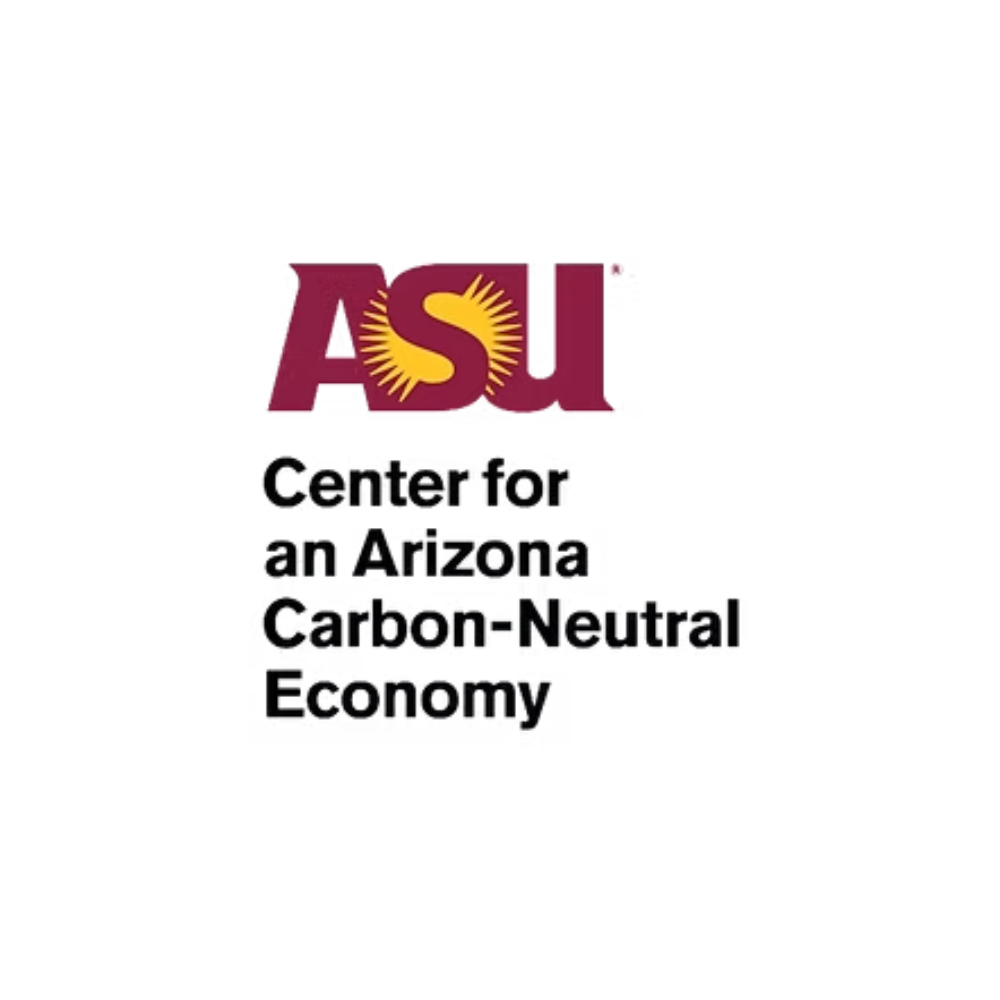Changes at the Federal Level: Issues to Watch Under a New Administration
.png)

What do we know about the Trump Administration’s priorities? How might CCUS and CDR projects be affected? What’s in store for the 45Q tax credit and what does industry think is needed? During this session we will discuss top of mind issues related to the change in administration at the federal level.

Renta Hattori

Virgil Welch

Ellen Friedman
Best Practices in Monitoring Reporting and Verification: Assessing Carbon Reductions and Removals
.png)

The need for robust measurement, reporting, and verification (MRV) is more critical than ever before. Currently, a proliferation of different MRV protocols exist. How can these be used as the foundation for more consistent and comprehensive MRV? Should there be federal level MRV-related regulations in the United States?
In addition to discussion surrounding these questions, delegates will learn about:
Leveraging machine data to improve the science behind accurate measurement.
The best practices we have today, understanding their constant evolution, and how today’s learnings can be used to improve predictions of carbon content in the future.

Nicholas Lembo

Oliver Erb

Pamela M Chu, Ph.D
Scaling Direct Ocean Capture Technologies and mCDR
.png)

How can the ocean’s natural capabilities be leveraged to help companies and governments reach their net-zero targets? In this session gain valuable insights into:
How climate innovation, specifically through Direct Ocean Capture carbon removal technologies which allow for large-scale removal from the atmosphere, can help companies and governments reach their net-zero targets.
The importance of integrating environmentally safe and sustainable marine carbon dioxide removal projects into regulatory frameworks and carbon reduction programs.
MRV in the context of marine carbon dioxide removal.
CCUS Applications Deep Dive: Critical Junctures on the Path Towards Meeting Cement Decarbonization Targets
.png)

Cement producers working to decarbonize their operations are facing numerous implementation challenges over and above the installation of carbon capture technology at their facilities. From high costs for the transportation of the captured carbon to the permitting timelines for the long-term storage of the carbon, if cement emissions reduction targets are to be reached in the next decade, then these challenges must be rapidly addressed.
During the initial phase of the first carbon capture demonstrations at cement production facilities, how can policymakers ensure that regulatory and market certainty as well as robust financial incentives coalesce to underpin the successful transition to net-zero greenhouse gas emissions cement?

Connor Woodrich

Zhinan Chen

Jon Dearing
Voluntary Carbon Market, What Lies Ahead Navigating the Future of Voluntary Carbon Markets and Carbon Dioxide Removal Credits
.png)

As the voluntary carbon market evolves, a key focus is on carbon dioxide removal (CDR) credits, an emerging but critical tool in the fight against climate change. This session will explore the current state of play of the voluntary carbon markets, looking to lessons in jurisdictions outside of the U.S. (e.g., EU) and the interplay with compliance markets. The session will also explore the unique risks and challenges faced by companies active in the early-stage CDR market. While firms with net-zero commitments see potential in these credits, they often bear a disproportionate risk burden. We’ll discuss the pivotal role of policy in shaping these markets and examine whether unconstrained, for-profit CDR could distort market dynamics. Join us to understand the complexities of the voluntary carbon markets and how risk mitigation can unlock its full potential to drive meaningful carbon reductions and removals.

Jaclyn (Jackie) Ferlita
.png)
Peter Mayer

Kasia Kłaczyńska Lewis
Carbon Utilization: Ramping Up SAF Supply
.png)

Sustainable Aviation Fuel (SAF) has emerged as a key solution for decarbonizing aviation, but scaling up its production to meet growing demand presents significant challenges. This panel will explore the role of carbon utilization in accelerating SAF supply, examining the latest advancements in feedstock sourcing, production technologies, and the integration of carbon capture and utilization for SAF development. Experts will discuss the strategies needed to expand SAF's availability, from increasing supply chain efficiency to securing long-term investments and partnerships. Join us for a deep dive into how carbon utilization can drive the rapid scaling of SAF production, making it a cornerstone of aviation’s path to net-zero emissions.

Taylor Huff

Timur Davis

Kendra Kuhl
Biochar: Synergies and Opportunities
.png)

In this session we will dive into a discussion of the scaling of biochar use in the agricultural sector and the large opportunity it represents. From the challenges of real world agricultural applications to what it takes to build partnerships to encourage use, hear about what’s needed to scale, the reality of the state of feedstock supply, and the importance of appropriately managing demand.

James Gaspard

Tom Marrero Ph.D
Timely Permitting: Ideas for Reform
.png)

Lengthy permitting is a barrier to the timely deployment of carbon capture and storage (CCS) projects. Several agencies-- local, state, and federal, are involved with numerous approval processes for CCS. From the installation of the capturing equipment to the transportation of the captured carbon and siting of sequestration facilities, successfully navigating permitting requirements and timelines will be key to a project’s success and fundamental to the successful deployment of CCUS technology and growth of the industry.
Currently, projects face lengthy delays. The longer the permitting timeline, the greater the project risk. In this session we will discuss ideas to support timely permitting, their effectiveness, and their political feasibility. The session will cover:
The Safe Drinking Water Act state primacy mechanism’s potential to accelerate the Underground Injection Control (UIC) Class VI permit review period, including learnings from states that have already received primacy (North Dakota, Wyoming, and Louisiana)
The need for clarification and centralization of state and federal regulatory authority over carbon dioxide pipelines
Strategies for maintaining thorough community engagement and environmental review as permitting processes are streamlined

Courtney Shephard

Zach Liu, PE, PG, CFA

Samuel Pickerill
Timely Permitting: Ideas for Reform
.png)

Lengthy permitting is a barrier to the timely deployment of carbon capture and storage (CCS) projects. Several agencies-- local, state, and federal, are involved with numerous approval processes for CCS. From the installation of the capturing equipment to the transportation of the captured carbon and siting of sequestration facilities, successfully navigating permitting requirements and timelines will be key to a project’s success and fundamental to the successful deployment of CCUS technology and growth of the industry.
Currently, projects face lengthy delays. The longer the permitting timeline, the greater the project risk. In this session we will discuss ideas to support timely permitting, their effectiveness, and their political feasibility. The session will cover:
The Safe Drinking Water Act state primacy mechanism’s potential to accelerate the Underground Injection Control (UIC) Class VI permit review period, including learnings from states that have already received primacy (North Dakota, Wyoming, and Louisiana);
The need for clarification and centralization of state and federal regulatory authority over carbon dioxide pipelines;
Strategies for maintaining thorough community engagement and environmental review as permitting processes are streamlined.

Courtney Shephard

Zach Liu, PE, PG, CFA

Samuel Pickerill
Competing for Energy – What Lies Ahead for Direct Air Capture Deployment
.png)

Direct Air Capture (DAC) holds immense promise for removing carbon from our atmosphere, but its widespread adoption is hindered by the challenge of securing affordable, reliable, clean energy. As DAC technologies scale, the need for power and heat to run capture processes becomes increasingly critical.
This panel will explore the energy challenges facing DAC companies, including the cost of renewable energy procurement, grid reliability concerns, and competing demand from other industries. Panelists will discuss potential solutions such as low-temperature geothermal, re-imagining public discourse on “acceptable” and “unacceptable” DAC methods, and coordination with electricity grid planners. Join us as we explore the energy hurdles standing in the way of DAC's successful scaling and the strategies needed to overcome them.

Josh Santos

Mark Cyffka
The CO2 Pipeline Infrastructure Question: Catalyzing Critical CO2 Transport Buildout
.png)

CO2 pipelines are a critical enabler of Carbon Capture, Utilization, and Storage (CCUS) projects, yet they often present the largest bottleneck in scaling up these efforts. In this session, we will explore the key challenges facing the development and expansion of CO2 pipeline infrastructure, including regulatory hurdles, permitting delays, and the complexities of coordinating across jurisdictions. With demand for carbon storage increasing, stakeholders must address logistical, technical, and financial barriers to ensure that captured CO2 can be transported efficiently and securely.
Join us for an in-depth discussion on innovative solutions, successful case studies, and the role of policy and investment in overcoming these pipeline buildout constraints to unlock the full potential of CCUS and accelerate the transition to a low-carbon future.

Husam Al Hasan, PE, PMP

Peter Psarras, PhD

Jeff Lee
Lowering the Cost of CDR: Advancements in Materials and Processes
.png)

The U.S. Department of Energy established the Carbon Negative Shot, aiming to spur innovation in carbon dioxide removal and storage technologies that can be deployed for less than $100/ton of CO2e. Hear about the latest advancements in carbon capture technologies. From modular systems that can be installed at any site to closed-loop systems that can be built from off-the-shelf components, hear from technology providers and investors about the ideal technology profile.

Pratik Prabhu

Kalle Marsal

Masaki (Maki) Harada

Elena Nikonova
California Air Resources Board Statement on CCUS and Q&A
.png)

The California Air Resources Board will make a statement on carbon capture and its work on Senate Bill 905 and the Low Carbon Fuel Standard. The statement will be followed by Q&A.

Natalie Lee
Championing Deployment: Policies to Support the Commercialization of Carbon Removal
.png)

In this session we will discuss the policy catalysts needed to scale carbon removal. The importance of public and private partnerships and governments generating demand will be discussed as well as ideas on structuring the most conducive regulatory frameworks to support the industry from both a policymaker and investor perspective.

Vikrum Aiyer

Brian Holt

Tomohito Shibata

Senator Anna Caballero
Carbon Utilization for Building Materials
.png)

In this session we will dive into a specific use case for captured carbon dioxide: its use in concrete production. This session will start off with an exploration of the technology, discussing processes such as CO2 mixing and CO2 curing.
The session will then transition into a discussion of considerations for real world applications, existing pilots, the biggest risks, and ideas to avert these risks.What can be done to encourage the use of captured CO2 in concrete? How can cost and safety complexity be managed?

Nick Barnett

Dan Soeder
Priorities for California’s Cap-and-Trade Program Renewal
.png)

California’s Cap-and-Trade Program plays a pivotal role in the state’s emissions reduction strategy, creating a market for carbon allowances. The program is expected to be reauthorized in 2025 (five years before the program’s expiration date).
In this session, we’ll discuss potential reforms to ensure the program better supports California’s 2045 carbon neutrality target and continues to drive CCUS and carbon removal innovation in the face of pressing climate challenges. Join us to understand the critical link between cap-and-trade compliance markets, voluntary carbon markets, and the future of carbon removal technologies.
Small-Scale, Near-Site CCS: A Catalyst for Scaling Up Carbon Capture Projects
.png)

This presentation delves into the challenges and opportunities of launching CCS projects, addressing key economic barriers, infrastructure requirements, public perception concerns, and competition from emerging technologies.
Drawing on the Harvestone Blue Flint CCS project as a real-world case study, it illustrates how smaller-scale, near-site CCS projects can provide a practical and impactful entry point for meeting emissions reduction targets.
The session also emphasizes the importance of innovation in overcoming technical and regulatory hurdles, the need for strategic investment to unlock scalability, and the crucial role of public engagement in building support for CCS initiatives.


.png)
.png)
.png)
.png)
.png)


.png)
.png)
.png)
.jpeg)








































































.png)
.png)
.png)




















.png)





.jpeg)
.png)


























.png)






.png)

















.webp)
















.png)
.png)
.png)
.png)